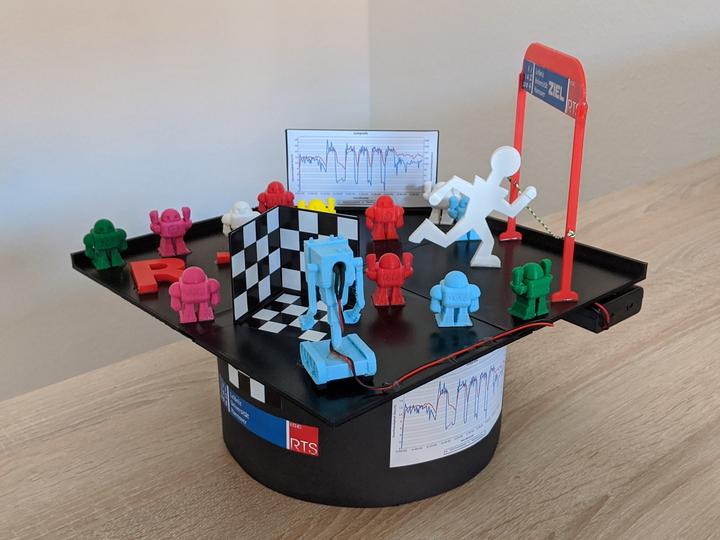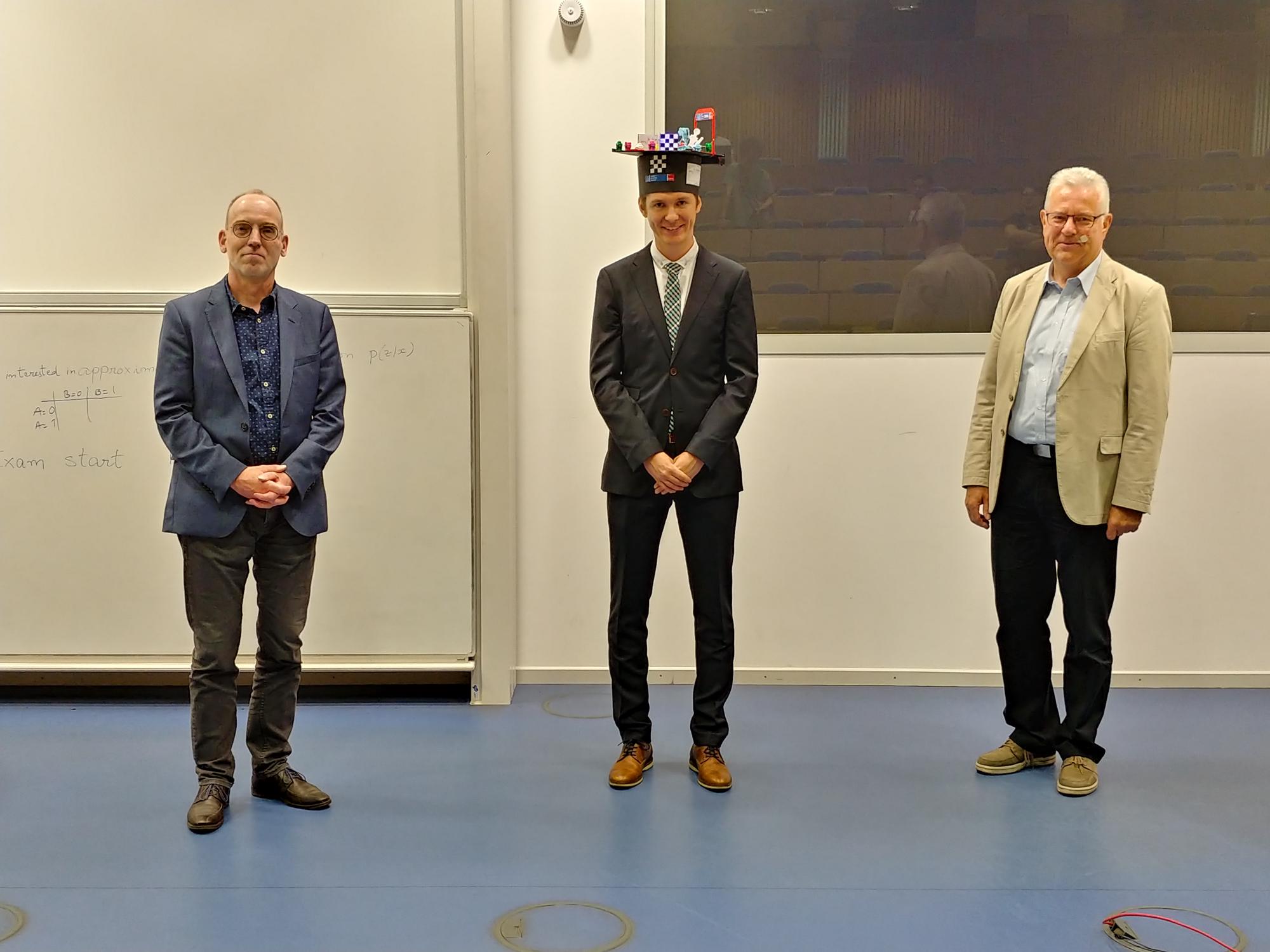 Mortarboard designed and built by Jörg Adolf.
Mortarboard designed and built by Jörg Adolf.
Abstract
With the advent of autonomous driving, the localization of mobile robots, especially without GNSS information, is becoming increasingly important. It must be ensured that the localization works robustly and timely warnings are provided if the pose estimates are too uncertain to assure a safe operation of the system. To meet these requirements, autonomous systems require reliable and trustworthy information about their environment. To improve the reliability and the integrity of information, and to be robust with respect to sensor failures, information from multiple sensors should be fused. However, this requires inter-sensor properties (e.g. the transformation between sensor coordinate systems) to be known. Naturally, neither the actual sensor measurements nor the inter-sensor properties can be determined without errors, and thus must be modeled accordingly during sensor fusion. To localize autonomous vehicles without GNSS information in 3D, this work introduces a dead reckoning approach relying on information from a camera, a laser scanner and an IMU. First, novel error models for the individual sensors are introduced. Here, the errors are assumed to be unknown but bounded, which requires bounds (i.e. intervals) that are not exceeded by the actual sensor errors to be known. However, no further assumptions are required. In particular, the error distribution within the bounds does not need to be known, which is a frequently overlooked assumption of established approaches. Furthermore, interval-based error models are compatible with unknown systematic errors and can be used to guarantee results. Second, to determine the inter-sensor properties and the corresponding uncertainties, this thesis presents new approaches for the spatiotemporal calibration between camera, laser scanner and IMU that employ the proposed error models. Third, an innovative method that considers both sensor and inter-sensor errors for guaranteed sensor fusion is proposed. The fused information is subsequently used to perform interval-based dead reckoning of a mobile robot. To evaluate the developed methods, both simulated and real data are analyzed. It becomes evident that all proposed approaches are guaranteed to enclose the true solution if the sensor error bounds are correct. Moreover, although interval-based approaches consider the “worst case”, i.e. the maximum sensor errors, the results are reasonably accurate. In particular, it can be determined in which instances a state-of-the-art method computes a result that deviates significantly from the actual solution.
